Organizational Structure Guide - Models, Pros & Cons, Examples (2025)
Your org chart is only half the story. Discover how modern organizational structures fuel speed, accountability, and cost-control. Learn more about organizational structures, their pros, cons, and real-world examples.

How your company is structured has a bigger impact than most people realize.
A well-defined organizational structure isn’t just about reporting lines and job titles, it’s the engine behind how work flows, how decisions are made, and how quickly your business can adapt to change.
Whether you're a startup building from scratch or a growing enterprise rethinking your framework, this guide will help you understand the models, trade-offs, and best practices that drive high-performing organizations.
Let’s break down the different types of org structures, how to choose the right one, and how to fix the common challenges that slow teams down.
This guide covers:
Definition: What Is Organizational Structure?
Organizational structure is the arrangement of roles, responsibilities, and relationships within a company that outlines how tasks are allocated, coordinated, and supervised. It defines reporting lines, team configurations, and authority levels, providing clarity on how information flows and how decisions are made within the organization.
It's basically, the blueprint that lays out who does what, who reports to whom, and how information and authority flow through the various levels and divisions.
Now, you might be thinking - "Why do I need something so rigid and confining? We're innovative! We're disruptors! Can't we just go with the flow?"
Well, you could try that.
But ask any leader of a successful, scaled organization and they'll tell you, having no structure is a structure in itself. And it's usually a pretty chaotic and inefficient one.
What Are the Four Basic Elements of Organizational Structure?
Organizational psychologist Edgar Schein identified four fundamental elements that form the backbone of every effective organizational structure. Understanding these elements helps leaders design clear, cohesive, and efficient structures:
- Common Purpose: Establishes the shared goals and mission that unify everyone in the organization, ensuring alignment and clarity of vision.
- Coordinated Effort: Defines how teams and individuals collaborate efficiently to achieve organizational objectives, ensuring efforts are synchronized and purposeful.
- Division of Labor: Breaks down tasks and responsibilities into specialized roles, allowing employees to focus on their areas of expertise, increasing productivity and quality.
- Hierarchy of Authority: Establishes clear reporting lines and decision-making channels, providing structure and clarity around authority, accountability, and responsibilities.
The Key Components of a Successful Organizational Structure
While structures can take many forms, most incorporate some variation of these core elements:
- Work Specialization - How activities and roles are grouped (e.g. by function, product, geography, process).
- Departmentalization - How the specialized groups are divided up into distinct units.
- Chain of Command - The lines of authority that determine who reports to who.
- Span of Control - How many direct reports a manager oversees.
- Centralization/Decentralization - The degree to which decision-making is concentrated or dispersed.
- Formalization - The level of standardization, rules, and procedures that shows how work gets done
So those are some of the key levers that leaders can pull to shape their organizational blueprints. But there's no one-size-fits-all formula. The ideal configuration depends on factors like the organization's size, strategy, environment, and technological landscape.
The Benefits of a Strong Organizational Structure
A well-designed organizational structure does more than just clarify reporting lines, it drives efficiency, boosts agility, and positions your company for sustainable growth.
Here are the top benefits:
- Faster Decision-Making: Clear responsibilities and streamlined hierarchies reduce bottlenecks, empowering teams to make quicker, smarter decisions.
- Improved Accountability: Defined roles and measurable KPIs ensure everyone understands their objectives, making performance tracking transparent and fair.
- Scalability: A thoughtfully built structure adapts smoothly to growth, enabling you to easily integrate new teams, products, or markets without chaos.
- Better Cost Control: Eliminates role duplication, optimizes spans of control, and reduces administrative overhead, improving your bottom line.
- Enhanced Visibility: 88% of HR leaders report that poor organizational visibility hampers workforce planning, with half spending over five hours each month just updating charts and structures (BusinessWire, 2025). A clear structure saves valuable time, freeing HR to focus on strategic tasks.
- Increased Engagement: Gallup finds highly structured teams are 17 % more engaged. (Gallup, 2024)
Visualize your Organizational Structure in Seconds!
Connect OneDirectory to your Microsoft 365 employee data and watch a live org structure populate. No spreadsheets, no manual updates.
Common Limitations of Organizational Structures (and How to Fix Them)
Organizational structures bring clarity to reporting and roles but are rarely flawless. Even the most carefully planned structures can overlook complexities of how teams collaborate and how work truly happens day-to-day. Recognizing and addressing these limitations can significantly improve your organization's agility, collaboration, and efficiency.
Below are the 10 blockers we see most often, and the fix HR & Ops teams deploy.
| Structural Limitation | Modern Solution |
|---|---|
| Rigidity & Slow Adaptation | Deploy cross-functional teams, agile pods, and dotted-line reporting to enhance flexibility. |
| Siloed Departments & Poor Collaboration | Implement collaboration platforms and foster interdepartmental project groups. |
| Unclear Roles & Overlapping Responsibilities | Clarify responsibilities using RACI models and role-mapping frameworks. |
| Decision-Making Bottlenecks | Empower team leads with decentralized decision-making and clear decision-rights frameworks. |
| Misalignment with Business Strategy | Directly align organizational roles and departments with strategic business goals. |
| Hidden Skills & Talent Visibility Issues | Maintain a dynamic skills inventory and create searchable internal directories. |
| Difficulty Scaling Rapidly | Utilize modular structures (hub-and-spoke or product-centric models) to scale swiftly. |
| Overemphasis on Job Titles | Highlight contributions and outcomes over titles with OKRs and peer recognition programs. |
| Ignoring Informal Influence Networks | Use network mapping and social analytics to reveal informal leadership patterns. |
| High Maintenance & Manual Updates | Automatically sync structures with HRIS and collaboration platforms to reduce overhead. |
By addressing these limitations proactively, you ensure your organizational structure remains adaptable, responsive, and strategically aligned to your company's evolving goals.
The Main Types of Organizational Structures
Organizational structure defines how tasks, responsibilities, and authority are distributed within a company. Whether you're in HR managing team growth or IT overseeing system integration, understanding organizational structures is crucial.
McKinsey insight: Future-ready companies redesign major elements of their org every 2–3 years, double the rate of peers.
1. Functional Organizational Structure
A functional organizational structure divides a company into departments based on specific skills, functions, or activities. Each department specializes in particular areas, such as marketing, sales, or product development, focusing their expertise toward achieving company-wide goals.
Pros of Functional Structures
- Higher Efficiency: Employees can focus on their specialized tasks, maximizing their productivity and expertise.
- Clear Communication: Defined roles and reporting lines facilitate straightforward communication, minimizing misunderstandings.
- Enhanced Collaboration: Teams within departments can more effectively share specialized knowledge and collaborate towards common objectives.
Cons of Functional Structures
- Reduced Flexibility: Departments can become overly specialized, struggling to adapt swiftly to market shifts or business changes.
- Risk of Silos: Departments may become isolated, hindering cross-functional collaboration and stifling innovation.
- Slower Decision-Making: Hierarchical reporting structures can delay decisions due to multiple layers of required approvals.
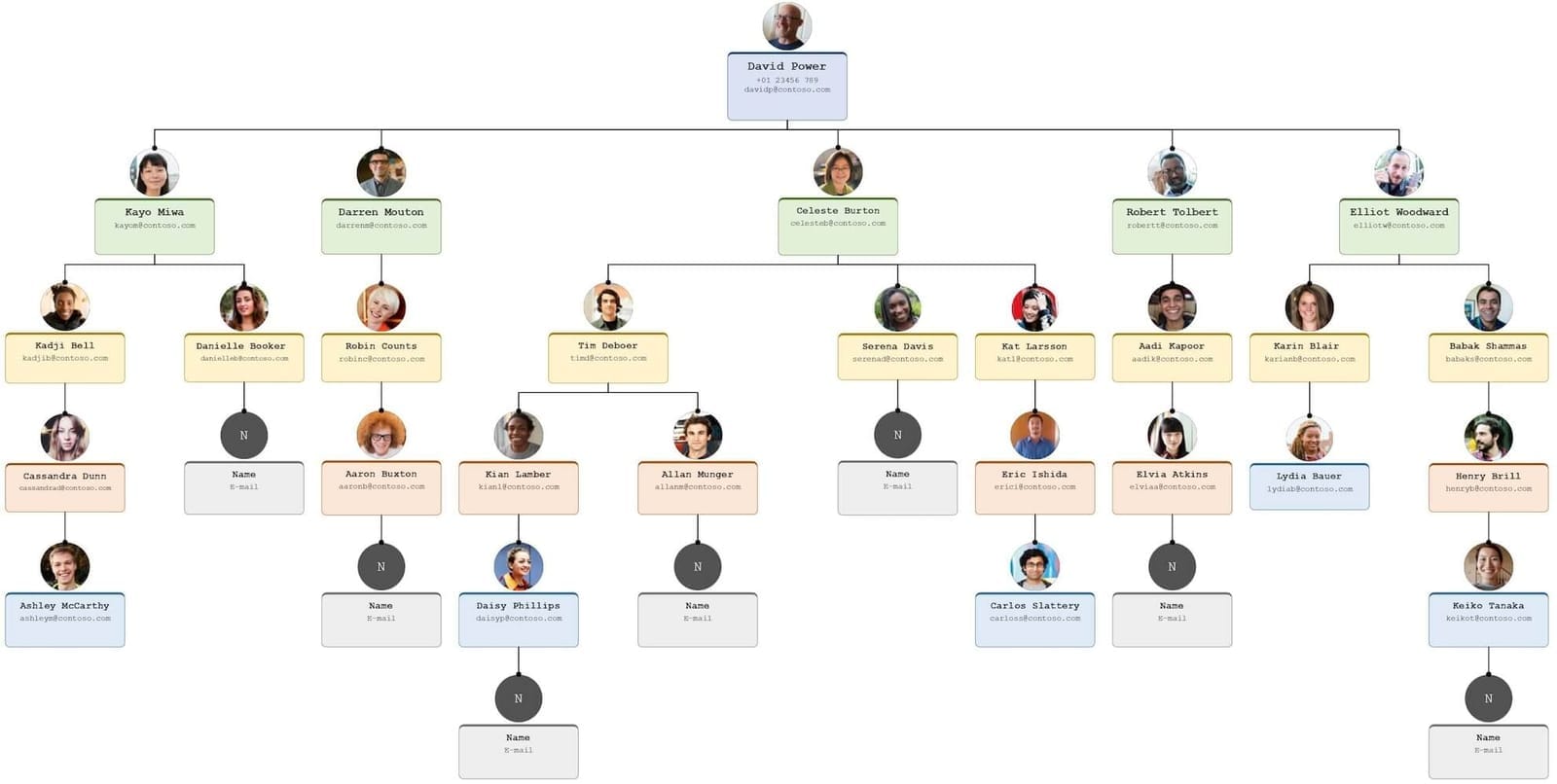
2. Matrix Organizational Structure
A matrix organizational structure blends aspects of functional and divisional frameworks, creating dual reporting relationships. Employees typically report to a functional manager for expertise and a project or division manager for specific outcomes.
Pros of Matrix Structures
- Enhanced Cross-Functional Collaboration: Teams from various functions actively collaborate, sharing diverse expertise and fostering innovation across departments.
- Balanced Organizational Focus: Employees simultaneously prioritize their functional skills and broader organizational or project-specific goals, aligning expertise with strategic objectives.
- Optimized Resource Allocation: Enables efficient matching of employee skills to project demands, ensuring resources are effectively utilized across multiple initiatives.
Cons of Matrix Structures
- Complexity in Reporting: Dual reporting lines can create confusion regarding roles, responsibilities, and prioritization, potentially leading to delays or conflicting instructions.
- Potential Power Struggles: Managers from different functions or projects might compete for authority, resources, or recognition, creating internal tension and reducing cooperation.
- Higher Administrative Burden: Managing multiple reporting relationships increases coordination efforts, administrative complexity, and operational costs, potentially hindering agility.
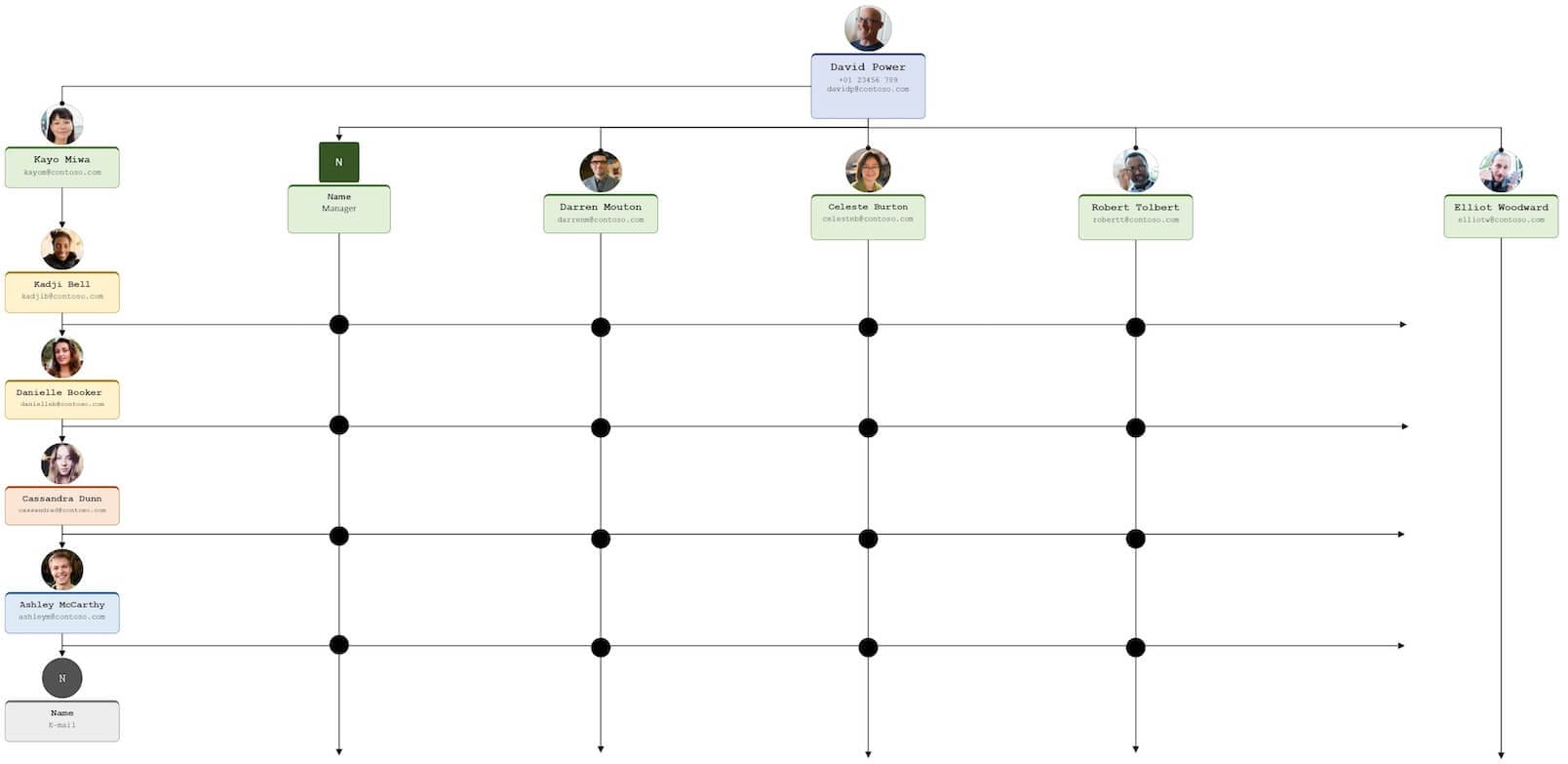
3. Flat Organizational Structure
A flat organizational structure has fewer layers of management, promoting a more egalitarian approach to decision-making and communication. This structure encourages employee autonomy and fosters a collaborative work environment.
Pros of Flat Structures
- Faster decision-making: With fewer layers of management, decisions can be made more quickly, enabling the organization to respond rapidly to changes in the market or competitive landscape.
- Encourages innovation and creativity: The flat structure empowers employees to take initiative and contribute ideas, fostering a culture of innovation and continuous improvement.
- Promotes open communication: The reduced hierarchy in a flat structure facilitates more open and direct communication between employees at all levels, improving collaboration and reducing misunderstandings.
Cons of Flat Structures
- Potential for role ambiguity: In a flat structure, employees may lack clear guidance on their specific responsibilities or authority, leading to confusion and inefficiencies.
- Limited opportunities for career advancement: With fewer management positions available, employees may find it challenging to advance within the organization, potentially impacting employee motivation and retention.
- May become less effective as the company grows: As the organization expands, the flat structure may struggle to accommodate increased complexity and coordination demands, potentially necessitating a shift to a more hierarchical structure.
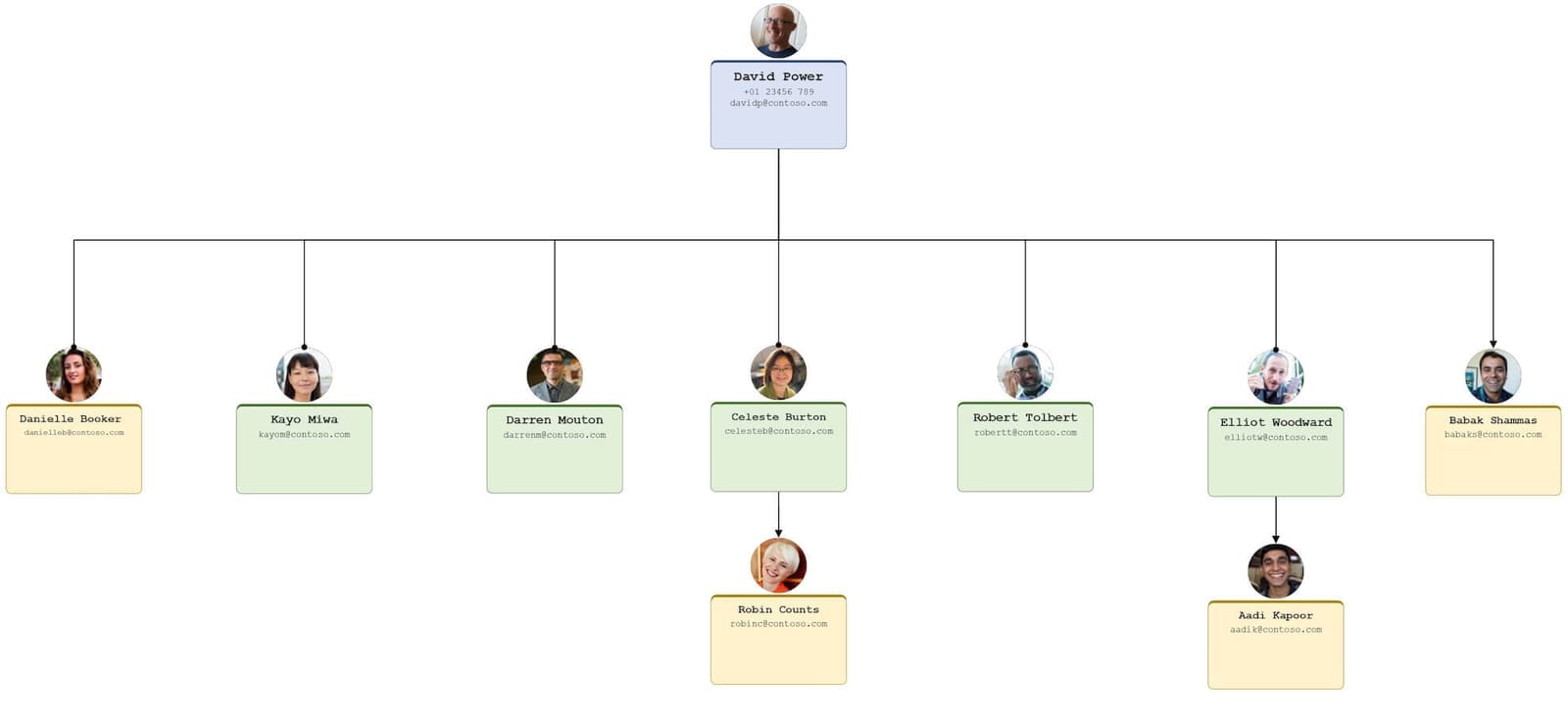
4. Divisional Organizational Structure
A divisional organizational structure groups employees based on the products, services, or markets they serve. Each division operates independently and is responsible for its own profit and loss.
Pros of Divisional Structures
- Greater flexibility: Divisions can more easily adapt to market changes, as they have autonomy in decision-making and resource allocation, allowing them to respond quickly to new opportunities or challenges.
- Enhanced focus: Divisions can concentrate on their specific products, services, or markets, ensuring that resources and attention are dedicated to the areas that matter most for their success.
- Encourages accountability: Divisional leaders are responsible for their division’s performance, fostering a sense of ownership and accountability that can drive better results.
Cons of Divisional Structures
- Duplication of resources: Divisions may replicate functions such as HR, finance, or IT, leading to increased costs and inefficiencies.
- Potential for internal competition: Divisions may compete for resources or recognition, potentially creating conflict and undermining organizational unity.
- Less emphasis on overall company goals: With divisions focusing on their specific objectives, there may be less alignment with overarching company goals and strategies.
5. Decentralized Organizational Structure
A decentralized organizational structure distributes decision-making authority across multiple levels, empowering teams and individuals closer to specific issues or projects. Unlike centralized structures, where key decisions flow from the top down, decentralized structures allow frontline managers and employees more autonomy.
Pros of Decentralised Structures
- Faster Decision-Making: Teams and local managers can respond quickly to opportunities and problems without waiting for approvals from higher-ups.
- Enhanced Innovation: Encourages creativity and experimentation, as employees feel empowered to innovate and take ownership of their projects.
- Improved Employee Engagement: Granting teams autonomy fosters greater job satisfaction, accountability, and motivation among staff.
Cons of Decentralised Structures
- Potential Inconsistency: Decisions made independently across the organization might lead to a lack of uniformity in processes, policies, and quality standards.
- Coordination Challenges: With multiple autonomous units, maintaining clear communication and alignment across the organization can become difficult.
- Difficulties in Oversight: Decentralization may make it harder for senior leadership to monitor performance effectively and ensure strategic coherence.
Other Organizational Structure Types
Beyond the common organizational structures, some businesses adopt specialized frameworks to address unique operational or strategic needs. Two notable examples are mechanistic and network organizational structures:
1. Mechanistic Structure
A mechanistic structure emphasizes strict hierarchies, defined roles, and centralized decision-making. Often used in industries like manufacturing or government agencies, it prioritizes stability, precision, and efficiency. While effective in stable environments, it may struggle with rapid innovation or adaptability.
2. Network Structure
A network structure relies on a flexible, decentralized approach, connecting multiple independent units, contractors, or organizations. Commonly adopted by tech startups or creative agencies, this structure supports agility, rapid collaboration, and specialization. However, managing partnerships and maintaining consistent quality across networks can pose challenges.
Organizational Structure vs Organizational Design
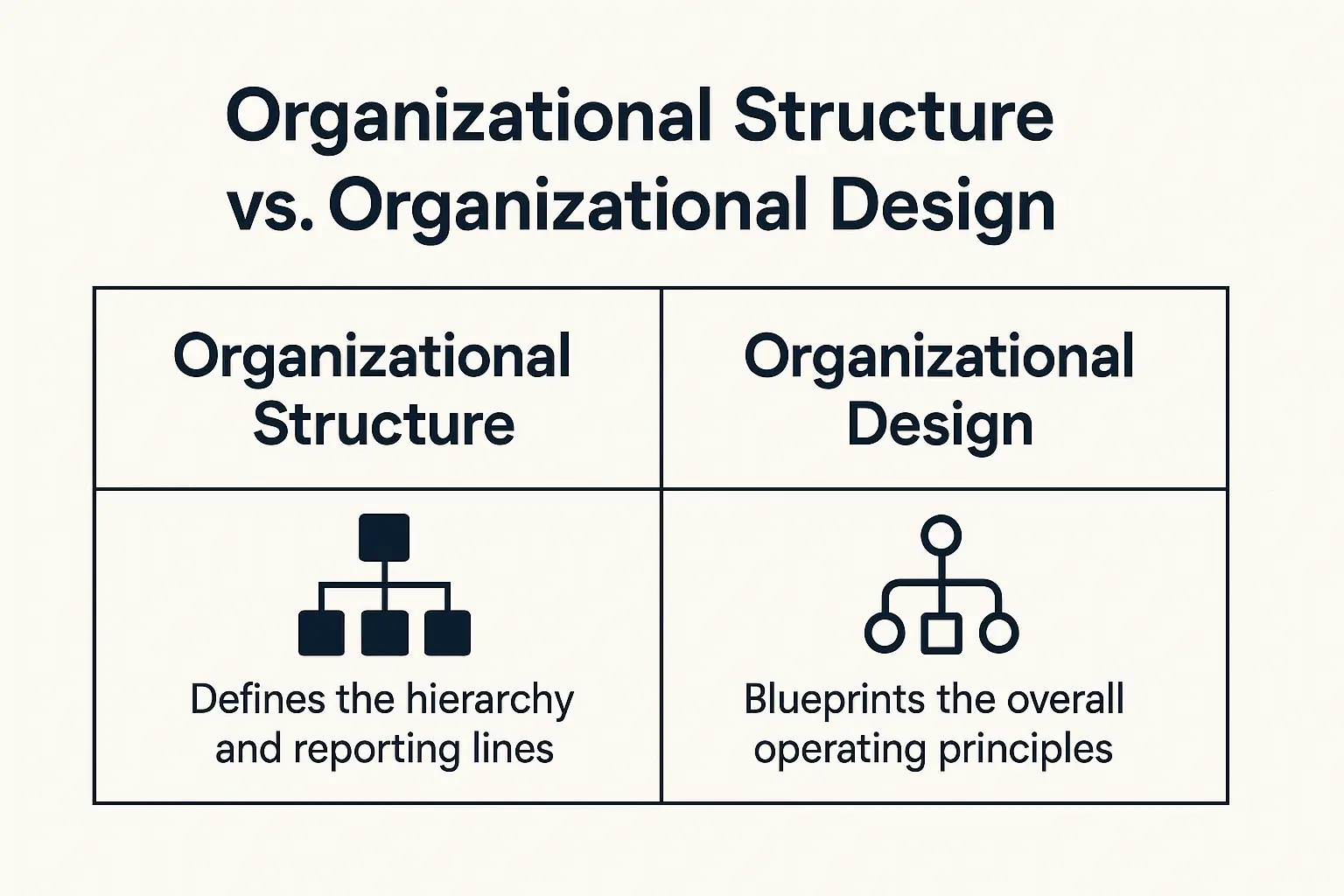
Organizational structure is the concrete blueprint, job titles, reporting lines, spans of control, that shows how work actually gets done today.
Organizational design sits one level higher: it’s the strategic exercise of shaping that structure to support where the business needs to go next. Think of design as the architect’s plan and structure as the finished building.
When leaders revisit their organizational design, adding product pods, flattening layers, or spinning up a new region, the structure must be updated to reflect those choices. That’s why any redesign effort should be paired with live tools that turn high-level plans into visible, day-to-day reality for every employee.
Organizational Structure vs Organizational Charts

Organizational structure and organizational charts are often mentioned together, but they're not interchangeable concepts. While both are crucial for clarity and operational effectiveness, each serves its own distinct purpose.
Understanding the differences between the two will help you leverage each tool effectively, transforming high-level strategy into actionable roles and clear reporting lines.
Here's a breakdown of how organizational structure differs from the familiar visual format of organizational charts.
| Aspect | Organizational Structure | Organizational Chart |
|---|---|---|
| Purpose | Defines how work is grouped, who owns which outcomes, decision rights, KPIs, and information flow across the company. | Visualizes that structure so employees immediately see reporting lines and peer relationships. |
| Focus | Roles, functions, accountability, and strategic alignment. | People, titles, and formal hierarchies (often boxes + lines). |
| Longevity | Designed to support medium- to long-term strategy; revisited every 2–3 years in future-ready firms. | Can become outdated quickly if promotions, hires, or re-orgs aren’t reflected. |
| Granularity | Specifies why a role exists and its success metrics. | Shows who holds each role at a point in time. |
| Output Format | Narrative documents, RACI charts, responsibility matrices, operating models. | JPEG/PDF, interactive SaaS charts, slides. |
| Value Delivered | Aligns resources to strategy; clarifies accountability; reduces overlap. | Boosts transparency, speeds onboarding, and helps employees navigate the org. |
Leaders first craft or revise the organizational structure, defining functions, spans of control, and decision rights. Once that framework is set, an org-chart tool plots every position into boxes and connectors, so the strategy becomes instantly understandable to every employee.
Find out more about:

Factors to Consider When Choosing an Organizational Structure
Selecting the right organizational structure is critical to your company's success. Here are key factors to consider for optimal alignment with your business needs:
Company Size: Your organization's size significantly impacts the ideal structure. Smaller businesses often thrive with simpler structures like flat or functional, while larger enterprises may need complex structures such as matrix or divisional to efficiently manage multiple teams and diverse operations.
Industry Trends: Align your structure with industry dynamics. Rapidly evolving sectors benefit from flexible structures like matrix or network models, whereas stable industries may find functional or divisional structures more effective.
Business Goals and Strategy: Ensure your structure supports strategic objectives and future growth plans. The right structure should facilitate—not obstruct—your long-term vision and goals.
Company Culture: Your chosen organizational structure should reinforce your company culture. For instance, innovative and collaborative environments flourish with flat or matrix structures, whereas traditional hierarchical structures may suit organizations prioritizing clear authority and control.
Management Approach: Select a structure compatible with your preferred management style. Hands-on, collaborative leaders typically prefer flat or functional structures, while authoritative, top-down management aligns better with divisional or hierarchical structures.
Scalability: Choose a scalable structure that can smoothly accommodate growth without becoming overly complex or cumbersome. Structures like matrix or divisional are often more adaptable to scaling compared to rigid hierarchical models.
Tips for Implementing the Right Organizational Structure
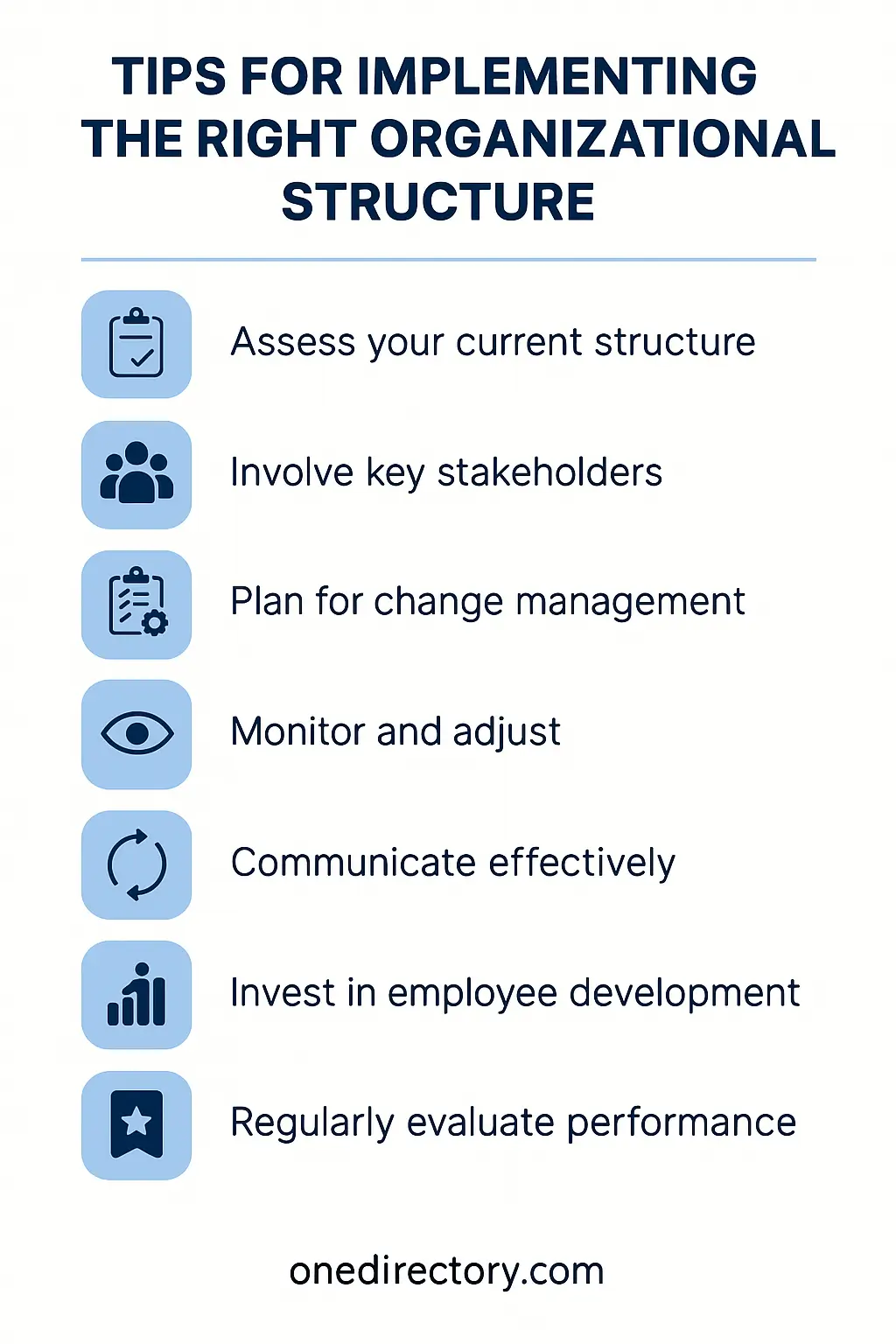
- Assess your current structure: Evaluate the effectiveness of your existing organizational structure and identify areas for improvement.
- Involve key stakeholders: Engage employees, managers, and other stakeholders in the decision-making process to ensure buy-in and support.
- Plan for change management: Prepare a detailed plan for implementing the new structure, including communication, training, and support for employees during the transition.
- Monitor and adjust: Regularly review the effectiveness of your chosen organizational structure and make adjustments as needed to optimize performance and adapt to changing business conditions.
- Stay agile: Be prepared to adjust your organizational structure as your company evolves, whether it’s due to growth, market changes, or new strategic priorities.
- Communicate effectively: Clearly communicate any changes in your organizational structure to employees and stakeholders, explaining the rationale behind the changes and how they will benefit the company.
- Invest in employee development: As your organization grows and evolves, invest in employee training and development to ensure your team is equipped with the skills and knowledge necessary to navigate the changing landscape.
- Regularly evaluate performance: Continuously monitor the performance of your organizational structure and seek feedback from employees and stakeholders to identify areas for improvement.
Frequently Asked Questions: Organizational Structure
What is the most common organizational structure for midsize companies?
A functional structure is the default for many midsize firms because it scales departmental expertise (e.g., Sales, Marketing, Engineering) while keeping reporting lines straightforward.
How often should a company review its organizational structure?
High-growth or fast-changing industries should review structure annually; stable industries can reassess every 2–3 years or after major strategic shifts.
What is an ideal span of control for managers?
Best-practice research suggests 7 – 8 direct reports for knowledge workers; fewer for highly technical roles and more for routine or transactional work.
Can one organization use multiple structure types at once?
Yes. Many enterprises blend a functional core with divisional P&L units, or layer a matrix overlay on top of regional hubs to stay agile.
How do I know if my structure needs to change?
Warning signs include decision bottlenecks, duplicated roles, siloed teams, sluggish product launches, and employees unclear on accountability. A brief org-health survey plus span-of-control analysis will confirm misalignment.
Ready to Build a Future-Ready Organization?
Your structure can be a growth engine, if it’s visible, flexible, and data-driven.
OneDirectory improves workplace transparency by providing a clear view of your company structure, helping employees navigate roles, teams, and reporting lines with ease.
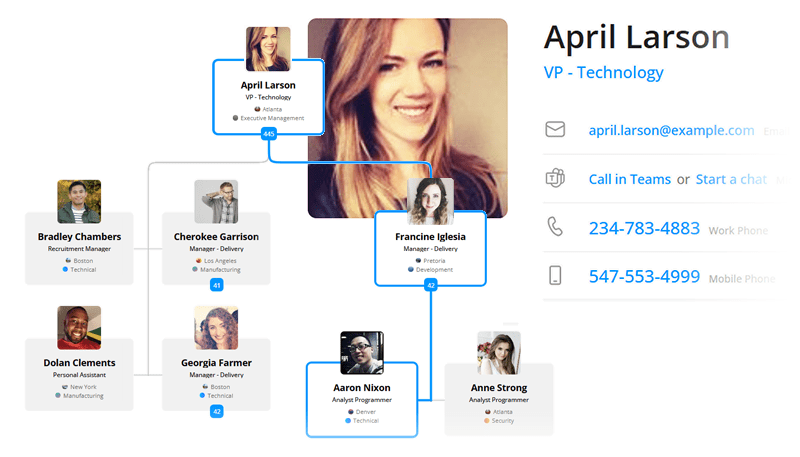
Want to see how OneDirectory can help you build and visualise your organizational structure?
